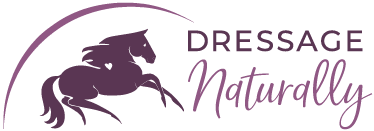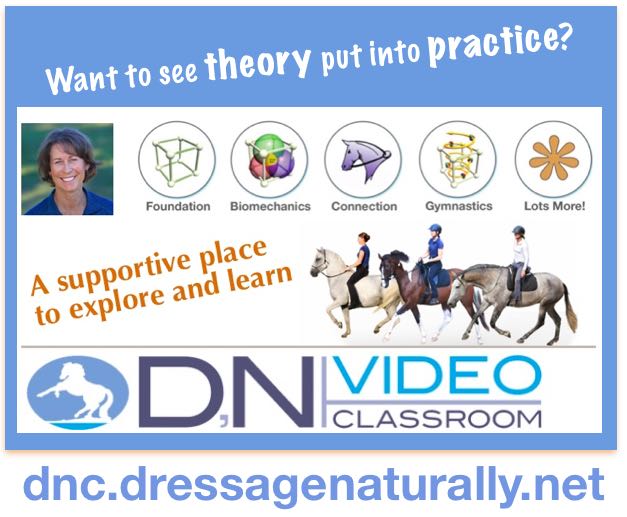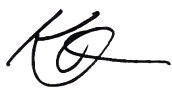Dressage trainers are known for (among other things) their ability to ride straight lines and to stay inside the box. Unfortunately, this can lead to too much of a direct-line approach to everything, with little ability to even think outside the box. If you listened to an average dressage lesson and made a list of what seemed to be the five most common solutions to dressage training problems, it would probably look like this:
5 Most Common Solutions to Dressage Problems
- Add more leg
- Do it again (and again, and again...)
- Shorten your reins
- Work harder
- Buy a new saddle
Unfortunately, those solutions often lead to dead-ends. When students come to me, it's usually because they have tried those 5 things again and again, and they're still stuck. In horse training, the shortest distance between where you are and where you want to be is not always a straight line. Here are some 'outside the box' solutions for your dressage problems.
Your New Top 5 Solutions to Dressage Problems:
- Wonder: ‘How can I help my horse?’
- Experiment with curiosity
- Trust your instincts
- Be responsible for your education
- Think outside the box of the dressage arena
You can use these solutions starting now. They are based on what I call The 5 Truths For Learning Dressage. After decades of teaching and training, I have discovered that this is the difference between students who feel stuck, even when receiving good information, and students who make progress even if they have little instruction.
If you are taking a lot of lessons and are not making the progress you want, or if you don’t have an instructor around you and you still want to improve, learn and remember these 5 simple truths.
THE 5 TRUTHS FOR LEARNING DRESSAGE:
Truth 1: Dressage is for the Horse
Truth 2: Don’t be afraid to mess it up
Truth 3: You know more than your instructor
Truth 4: You are responsible for your learning
Truth 5: Most of your dressage issues are not dressage issues.
#1: Dressage is FOR the horse.
Dressage is about healthy biomechanics, and it’s about helping each horse move the best he can. In the competitive atmosphere of dressage, it is easy to think that doing dressage is about getting your horse to be better than another, or to get to the upper levels.
The first priority of dressage should be to help horses recover from the burden of us sitting on them, so they can carry us in a healthy, pain-free way.
Having an attitude of ‘you will do this movement for me’ brings out the predator in us, which brings out the prey animal in our horse, and a tense disconnection is now in place. From here on, you are working against your horse instead of with him. When a student complains, "He won't do what I asked’, I ask them, "Why should he?". It’s a real question and a reminder that he owes us nothing. It wasn’t his idea to do dressage, and it has no inherent purpose to him. What will keep him motivated is us proving to him that the balance and posture we are asking him for will lead him to a freedom of movement that will feel good, even to him.
When we do dressage FOR the horse, we ask this question when challenges arise:
“How can I help you with this?”
Asking a question puts your brain into problem-solving mode. You will automatically start looking for ways to make things better. It is confidence-building because the question makes the assumption that you CAN make things better!
If you have found yourself thinking: ‘why won’t he do this for me?’ or ‘my horse is so lazy, or dull, or heavy, or uncoordinated’ or ‘why am I so terrible at this?' Stop, take a deep breath and ask your horse:
'How can I help you with this?’
‘How can I be clearer?’
‘What basic skill can we review in order to make what I am asking you easier?’
#2: Don’t be afraid to mess it up.
The learning process can be messy. By definition, we are doing things that we don’t yet know how to do. If you are expecting that the process is a straight line, or if the learning system you are in is not flexible, you may feel ‘wrong’ more than you feel ‘right’. When you're feeling ‘wrong’, it's easy to think you have to ride stronger or harder, and a cycle of frustration is set up. The blame is put on the student or the horse. The student feels worse and worse about themselves and the horses either check out or act out.
Life and learning are rarely perfect in every moment. I believe that precision arrives out of the possibilities that play creates. The more students and horses feel willing to experiment, the more chance there is to find improvement.
However, dressage tends to attract people who like precision and strict rules, and dressage environments can be unforgiving. Do your best to surround yourself with other people that forgive lack of perfection. Stay AWAY from groups that rip apart other riders. STAY AWAY from people who sit on the sidelines during other people’s lessons and criticize, and of course DON’T be one of those people. Practice looking at others (and yourself) in a way that focuses on the positive.
Fear of making a perceived mistake can be paralyzing, but you can’t course-correct if there is no movement. Try something. Be aware. Forgive.
#3: You know more than your instructor
You’ve probably heard the saying that 'the best kept secret is between you and your horse'. Yes, your instructor has more experience than you, (hopefully) but there are certain things they can’t know, such as exactly what your intention was, exactly what the horse feels from you, and what you feel from the horse.
Sometimes your instructor is getting in the way of the communication between you and your horse (GASP!).
Every time your instructor says ‘good’ when to you, if feels like you are against your horse, it is disconnecting you from your horse. Every time your instructor says “No, get after him” or something like that when you KNOW in your heart that he was just doing what you actually told him, you are disconnecting from your horse.
Make the quality of communication between you and your horse your top priority. Acknowledge the moments where you are fighting with or scared of your horse, and commit to figuring out why you and your horse are not understanding each other.
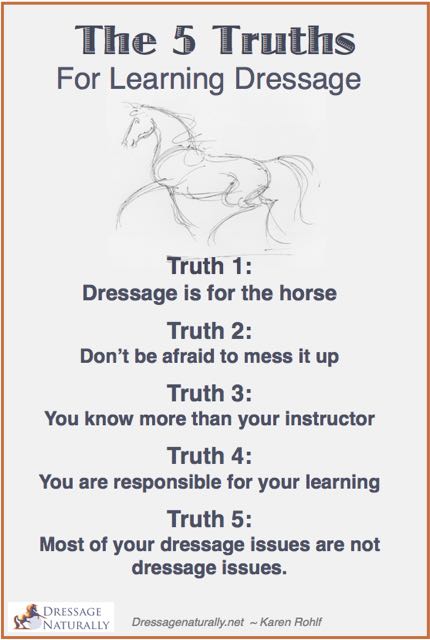
Harmony and clarity of communication are what your horse is looking for! He doesn’t care what your teacher is saying or how it looks. He just wants to be comfortable and keep you happy, quiet, and calm. Stay connected with your horse by honoring what you are feeling. It is not ‘good’ to have your horse’s head in the ‘right’ position if you have to hold on to it with 10 pounds of pressure to keep it there.
YOU need to ask questions! For example, you can ask your instructor: “When you say ‘good’, it still feels really heavy... What can I do to make it lighter?” OR “Hang on a second, I think I accidentally asked my horse for that... What could I do differently so that doesn’t happen?”
That brings us to Truth #4...
#4: YOU are responsible for your learning experience.
Reading this article is an example of taking responsibility for your learning, so YAY you! It is much easier to course-correct something that is already in motion. You, the student, need to arrive to every ride feeling motivated and curious. If you aren’t feeling inspired or responsible for your success, it’s easier to become frustrated and confused.
Why did you start dressage in the first place? What are you looking for? You need to want it MORE than your instructor. Don’t make your instructor have to carry you. If you can’t remember WHY you are doing this, then it is time to STOP and figure it out. Get inspired!
Maybe you have lost motivation because you got disconnected from your dream. Maybe no one around you inspires you. For most people, the feeling of harmonious connection and communication with the horse is what keeps them loving their rides. If you aren't feeling that yummy connection you need to figure out why.
This is your dream. Students who succeed know what they want to do and seek the experts who can best help them. Do your research. Know your goals. Know your questions, and seek the answers. Do your homework. Know what you want, and be bold enough to go find it.
Most of all, arrive ready to learn. That means doing the personal work you need to do to arrive happy, thirsty for knowledge, and open to new ideas. Stop making excuses. Leave your negativity at the door.
You don’t need to be a better rider in order to be happy and confident, but being happy and confident will definitely make you ride better!
Which brings us to Truth #5:
#5: Most of your dressage issues are not dressage issues.
The problems that may be manifesting in the dressage arena may be mental, emotional or physical. There are different strategies for solving each of those types of issues. If you are using the wrong strategies, you aren’t going to solve the problem. For example, if your horse loses bend because he is spooking in the corner, using your whip or spurs to force his body to bend and go deeper may only give him more reasons to be afraid of that corner, (and it won’t make him feel so great about half passes either).
The next time you are having trouble with your dressage, ask yourself: “Is this really a dressage issue?”
If you are stressed from your day, feeling confused, angry, or anxious, or if you don’t trust your horse, you will not perform at your best. Figure out what you need to do to be your best for your horse.
Your horse's emotional state matters too. His lack of enthusiasm for doing lengthenings in the arena may be less about the quality of your half halts and more about the quality of his life. If he is feeling helpless, bored, lonely, or spends most of his day standing still, improving his lifestyle may be the best way to improve his quality of gait.
We have 100% responsibility for our horse’s life. We need to respect how they live, play, eat, and how they are ridden. Everything counts.
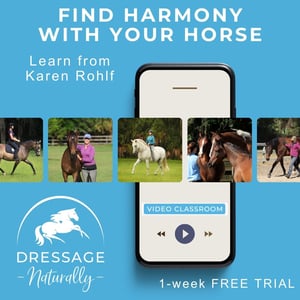
Think of the difference in posture and physical state between someone getting ready to do something they are really happy about doing, and the posture of an apathetic teenager being told to do the dishes or clean his room. You could try poking that teenager in the ribs, telling him to stand up straight, strapping his head in the right position, and whacking him in the butt a bunch of times, but you’re not going to get great results. Unfortunately, many dressage horses are trained like that.
If you would describe your horse as lazy or spooky or anxious, those aren’t dressage issues. Those are motivational, confidence, and partnership issues. If you do dressage poorly enough, you can create those issues, but in general those are issues that can (and should) be solved away from the dressage arena.
The broader and more well-rounded your education with horses, the better. Don't get stuck using those 5 most common solutions. Instead, learn the 5 Truths, and practice the Top 5 Solutions that will actually work.
Thoughts? Scroll down to leave a comment!
